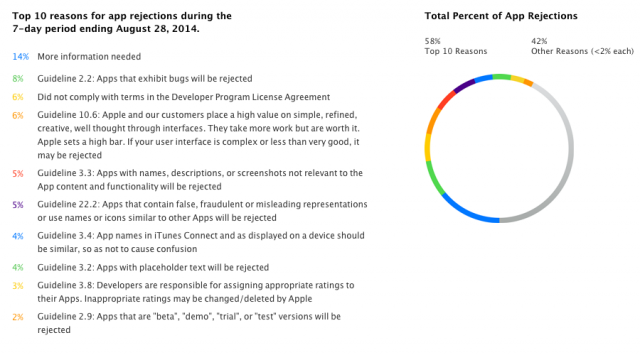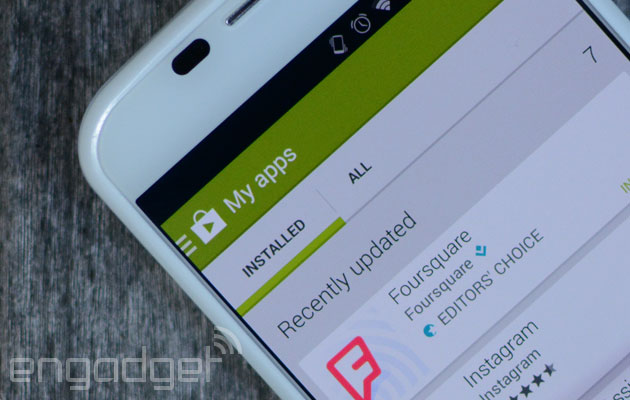// Ars Technica
If you've ever developed an app for the iPhone or iPad, you've had to deal with Apple's App Store Review Guidelines. The lengthy list of rules encompasses many different areas, and Apple has just published a new page to explain what rules are broken the most often—and what developers can do to avoid rejection.
Apple's graph (which reports app rejections for the week leading up to August 28) shows that "incomplete information" is the most frequent reason for rejection—this includes providing demo account credentials for apps that require an account, failure to adequately explain any special settings needed for evaluation, and failure to provide an accompanying demo video for apps that only work under specific circumstances (when attached to a particular piece of hardware, for example). In short, tell Apple what it needs to know to evaluate your app, because the company isn't going to take extra time to do research if your app isn't self-explanatory.
Bugginess is another big reason for app rejections, as is failure to comply with Apple's Developer Program License Agreement. A fuzzier problem that takes down six percent of apps is a "complex or less than very good" user interface, which could mean that the interface is too cramped or not finger-friendly—Apple provides many UI explainers to developers, and failure to take them into account can get your app thrown out even if it's otherwise useful. The chart above and the page itself explains how to comply to these guidelines as well as the others on the list, though they won't help you much if your app was one of the 42 percent rejected for "other reasons."

 While smartphone apps come in handy for a variety of uses from sharing photos to navigating a new locale, it appears that most folks in the US barely download them at all. According to ComScore, 65.5 percent of those users 18 and above who wield a...
While smartphone apps come in handy for a variety of uses from sharing photos to navigating a new locale, it appears that most folks in the US barely download them at all. According to ComScore, 65.5 percent of those users 18 and above who wield a... 
